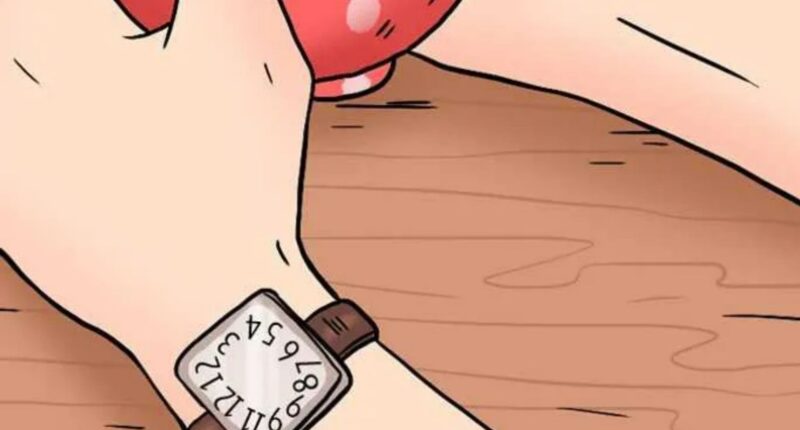CHALLENGE your intelligence and test your vision with this tricky brainteaser that only people with a 20/20 vision can solve.
You will be crowned a genius if you crack the puzzle in less than seven seconds.

Everyone can see the wristwatch – but the goal is to spot the mistake in the picture.
You must bring out your best game to crack this challenge as you race against the clock to solve it.
But with the sharpest eyes and the strongest minds, you stand a great chance of succeeding.
Although it may seem like an ordinary image, this is no easy feat, and the average person gives up after a minute.
And you only have seven seconds to complete the task.
But you can try your luck and see if you can crack the challenge and beat these people.
So grab a stopwatch, set the timer and see if you have a perfect 20/20 vision.
But did you know solving such challenges can improve your intelligence?
Optical illusions are visuals designed to trick our minds and can be a simple IQ test.
They test our understanding of reality, depth and perspective as we try to understand what’s in front of us.
Engaging in optical illusions and puzzles on a regular basis has been shown in studies to enhance problem-solving abilities, concentration, and attention.
How can optical illusions and brainteasers help me?
ENGAGING in activities like solving optical illusions and brainteasers can have many cognitive benefits as it can stimulate various brain regions.
Understanding that our eyes play a minimal role in processing what we see, with the brain being primarily responsible for interpreting and safeguarding against perceived dangers, can provide a clearer perspective on optical illusions.
Despite the world’s three-dimensional nature and the two-dimensional images received by our retinas, our brains are continuously working to swiftly comprehend our surroundings.
It can be really difficult for your brain to interpret everything at once so it will often take shortcuts and give you a simplified version of what you see so you can have quicker reaction times if the object you’re looking at looks dangerous.
When you look at an object what you’re really seeing is the light that bounced off of it and entered your eye, which is converted into electrical impulses that your brain then turns into an image.
Our brains can warp straight lines if an object in the middle of them looks like it’s drawing closer as it wants to emphasize the potential threat.
Different colours and light and dark can make the same-sized objects look different or make patterned images look like they’re spinning.
Some benefits include:
- Cognitive stimulation: These activities challenge the brain, promoting mental agility and flexibility.
- Problem-solving skills: Regular practice enhances analytical thinking and problem-solving abilities.
- Memory improvement: These challenges often require memory recall and can contribute to better memory function.
- Creativity: They encourage thinking outside the box, fostering creativity and innovative thought processes.
- Focus and attention: Working on optical illusions and brainteasers requires concentration, contributing to improved focus.
- Stress relief: The enjoyable nature of these puzzles can act as a form of relaxation and stress relief.
So before you start with this one, try and see if you can find the cheeky ghost trying to blend in within this party scene in a super quick time.
If you can then you have the watchful eyes of a clever spirit but beware they are very good at keeping secrets.
You can also try and spot all five differences between the two identical pictures.
Or have a go at finding the sausage that definitely shouldn’t be in with the fruit and vegetables.
Coming back to the challenge, were you able to solve it?
If you didn’t see it, look again carefully.
Here is a hint for you: read all the numbers on the watch.
Still no luck?
If you are scratching your head trying to solve it, you can scroll down to the bottom of the page to see the solution.
If you were able to solve this twisted challenge in less than seven seconds, you are a genius with a perfect 20/20 vision.
If you found this puzzle too easy, try to find the hidden butterfly in this vintage scene.
Alternatively, you can also try finding the hidden monkey hiding in this image before the zoo closes for the night.
If you are interested in solving more such optical illusions, we have added a few at the bottom of the page so do not forget to check them out.
























